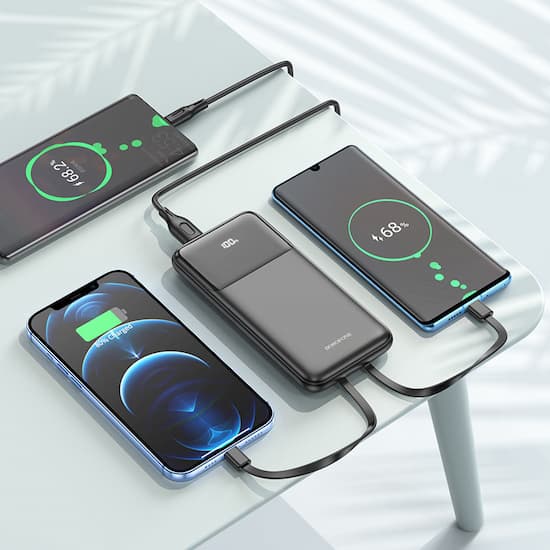Power Bank Safety: Tips for Safe Charging
Power banks have become essential for keeping our devices charged on the go. However, their misuse can lead to accidents and damage. This guide will provide practical tips to ensure safe charging and usage of your power bank. By understanding the potential hazards and following recommended practices, you can prolong the life of your power bank and keep your devices safe. Let’s explore the importance of power bank safety and the steps you can take to avoid common pitfalls.
Why is Power Bank Safety Important?
Understanding Potential Hazards
Power banks, while convenient, can pose several hazards if not used correctly. Overheating, short circuits, and even explosions are possible risks. These hazards often stem from improper charging practices, using low-quality devices, or exposing power banks to extreme conditions. Understanding these potential dangers is the first step in preventing accidents and ensuring the longevity of your power bank and the safety of your devices.
Common Safety Incidents
Safety incidents involving power banks are not uncommon. Reports of power banks catching fire or exploding highlight the risks associated with improper usage. These incidents often result from using non-certified chargers, overcharging, or physical damage to the power bank. Awareness of these common issues can help users take necessary precautions to avoid similar incidents.
Importance of Certified Power Banks
Choosing a certified power bank is crucial for safety. Certified power banks undergo rigorous testing to meet safety standards and are less likely to malfunction. Look for certifications such as CE, FCC, and RoHS when purchasing a power bank. Using certified products ensures you are using a reliable device, reducing the risk of accidents and improving the overall safety of your charging practices.
How Can You Charge a Power Bank Safely?
Use the Right Charger
Using the appropriate charger for your power bank is essential for safe charging. Always use the charger that came with your power bank or one recommended by the manufacturer. Using a charger with incorrect voltage or current can cause overheating or damage to the power bank, leading to potential safety hazards. The Anker MagGo Power Bank gets Qi2 certified charging, which embraces the convenience of 15W wireless charging that comes with the assurance of Qi2 certification for fast, secure, and efficient power boosts.
Avoid Overcharging
Overcharging your power bank can lead to overheating and reduce its lifespan. Most modern power banks come with built-in protection against overcharging, but it’s still good practice to unplug the device once it’s fully charged. This habit not only ensures safety but also helps maintain the battery’s health over time.
Monitor Charging Environment
Always charge your power bank in a safe environment. Avoid placing it on flammable surfaces or in direct sunlight while charging. Ensure the area is well-ventilated to prevent overheating. Keeping an eye on the charging process can help you quickly respond to any unusual signs, such as excessive heat or strange smells, preventing potential accidents.
What to Avoid When Using a Power Bank?
Exposing to Extreme Temperatures
Extreme temperatures can significantly impact the safety and performance of your power bank. Avoid leaving your power bank in very hot or cold environments, such as a car on a sunny day or outside during winter. Extreme heat can cause the battery to overheat and potentially explode, while extreme cold can reduce its efficiency and lifespan.
Using Damaged Cables
Using damaged or frayed cables can be dangerous when charging your power bank. Damaged cables can cause short circuits or sparks, leading to fire hazards. Always inspect your cables for any signs of wear and tear and replace them immediately if they are damaged to ensure safe and efficient charging.
Charging on Flammable Surfaces
Charging your power bank on flammable surfaces like beds, couches, or paper stacks can be risky. If the power bank overheats or malfunctions, it could ignite these materials, causing a fire. Always charge your power bank on a hard, non-flammable surface to minimize this risk and ensure a safe charging environment.
How to Maintain Your Power Bank for Long Life
Regular Cleaning and Inspection
Regularly cleaning and inspecting your power bank can help maintain its performance and safety. Wipe the exterior with a soft cloth to remove dust and debris. Inspect the ports for any signs of damage or corrosion. Regular maintenance helps ensure the power bank functions correctly and prevents potential hazards.
Proper Storage Practices
Store your power bank in a cool, dry place when not in use. Avoid leaving it in direct sunlight or humid environments. Proper storage helps preserve the battery’s health and ensures it remains safe to use. Keeping it in a protective case can also prevent physical damage.
Periodic Charging Cycles
To maintain the health of your power bank, perform periodic charging cycles. Use it regularly and avoid letting it sit unused for long periods. Aim to recharge it at least once every three months if not in regular use. This practice keeps the battery active and prolongs its lifespan.
Conclusion
Ensuring the safety of your power bank involves understanding potential hazards and following best practices for charging and maintenance. By using certified power banks, the right chargers, and avoiding extreme temperatures, you can prevent accidents and extend the life of your device. Regular cleaning, proper storage, and periodic charging cycles are essential for maintaining the health and efficiency of your power bank. Following these safety tips will help you get the most out of your power bank while keeping you and your devices safe. Stay informed and practice these habits to enjoy the convenience of your power bank without any risks.
Keep an eye for more news & updates on Verified Zine!






